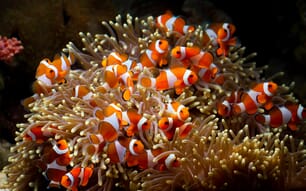There are more than 400 aquatic ‘dead zones’ worldwide. These waters suffer from severe eutrophication, often as a result of farmland run-off, of nutrients in organic waste and inorganic fertilisers. Such conditions are among the most serious problems faced by aquatic ecosystems, threatening biodiversity and important ecosystem services, such as recreation and provision of food.
Eutrophication and hypoxia can affect wildlife in fundamental ways. For instance, hypoxia can disrupt the metabolism of sex hormones in some fish species, producing more males in successive generations, which can have long lasting effects on the sustainability of fish stocks. The sex of fish is often affected by environmental conditions.
However, in this study, researchers purposely chose a species of fish which is known to have a ‘genetic’ sex (with XX and XY chromosomes like humans) that is not determined entirely by their environment.
Around 10 per cent of fish species have a genetic sex. However, it is not known if a hypoxic environment can influence the development of such species, despite their sex determination genes.
The researchers placed fertilised Japanese medaka (Oryzias latipes) eggs into either water with normal oxygen content or hypoxic water and monitored their development from hatching over 90 days to adulthood.
In addition, they measured the expression (or activity) of key genes for sex determination at different stages of development. Eggs in hypoxic conditions hatched on day nine, a day later than eggs in normal water.
Overall, 77 per cent of the female fish in hypoxic conditions developed the physical characteristics of males by 90 days and 54 per cent developed testes, rather than ovaries, although genetically they were still female.
Only three per cent of genetically female fish in normal conditions developed any male characteristics. Genetic males were unaffected. The researchers found that a gene controlling the development of ovaries in female fish was significantly less active at key stages of development in a hypoxic environment.
At the same time a gene on a non-sex chromosome, a duplicate of one found in the male chromosome which controls development of male reproductive organs, was significantly more active.
This study is the first to show that hypoxic environments can turn a genetically female animal into physical male, and to identify the mechanisms underpinning this shift.
These findings provide further support for measures to reduce hypoxia and eutrophication, and highlight hypoxia and eutrophication’s potential to cause short-term disruption and long-term damage to wild populations and ecosystems.
Eutrophic and hypoxic waters can be found along many areas of Europe’s coastlines and seas, particularly around the North and Baltic Seas. Europe has taken a number of steps to combat and reduce eutrophication, for example, via the Nitrates Directive, Urban Waste Water Directive, Water Framework Directive and the Marine Strategy Framework Directive however it remains an issue requiring further measures.
Source: Cheung, C. H. Y., Chiu, J. M. Y., & Wu, R. S. S. (2014). Hypoxia turns genotypic female medaka fish into phenotypic males. Ecotoxicology, 23(7), 1260–9. DOI:10.1007/s10646-014- 1269-8.



